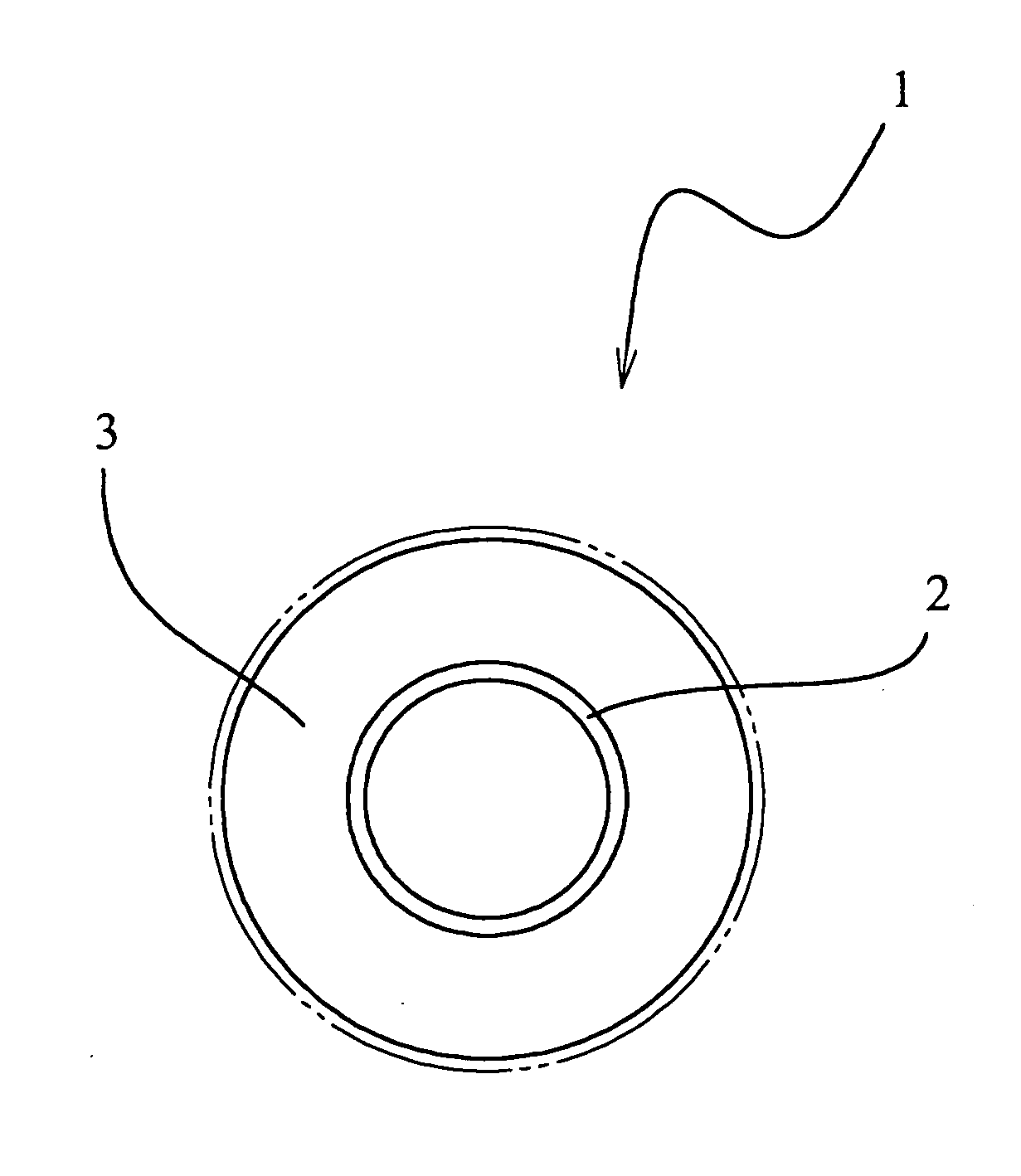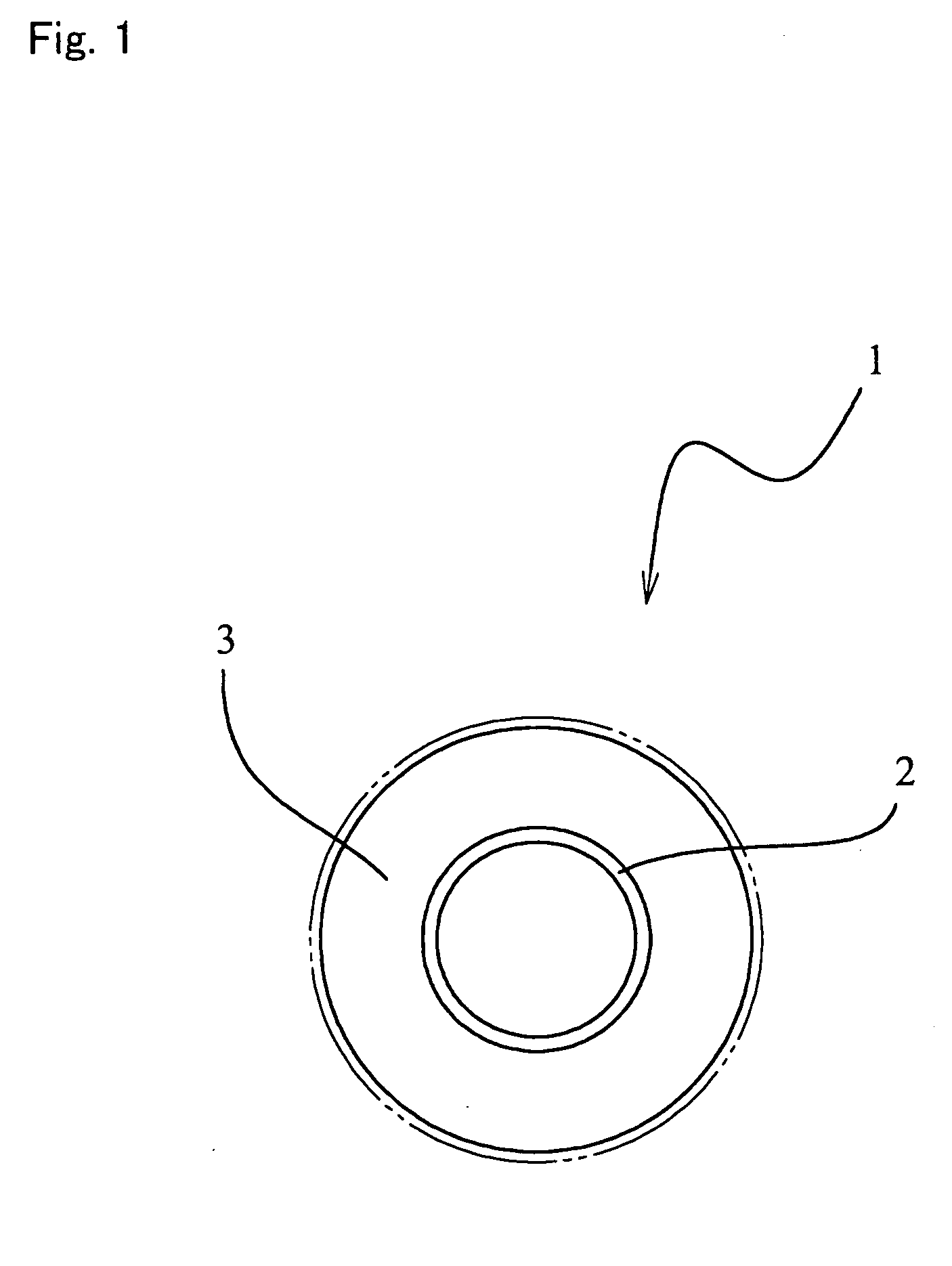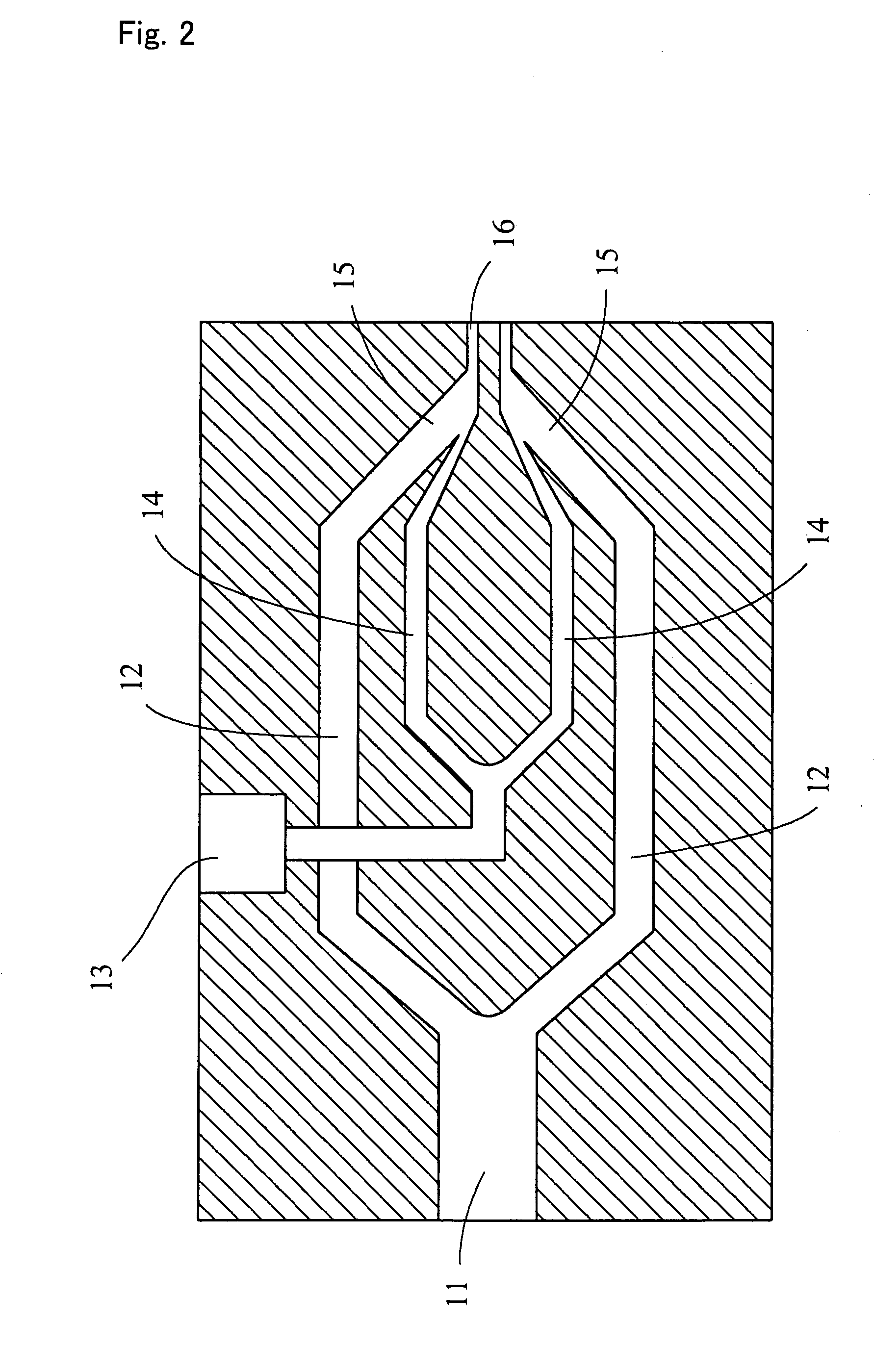Multi-layer tube
a multi-layer tube and adhesive layer technology, applied in the field of multi-layer tubes, can solve the problems of increasing so as to achieve the effect of reducing the difficulty of adhesion, and increasing the adhesion strength
- Summary
- Abstract
- Description
- Claims
- Application Information
AI Technical Summary
Benefits of technology
Problems solved by technology
Method used
Image
Examples
example 1
[Forming of Multi-Layer Tube]
[0036] The multi-layer tube shown in FIG. 1 was used as the embodiment 1. As the fluororubber type thermoplastic elastomer (A) of the base tube 3, DAI-EL thermoplastic T-530 was used, and as the (vinylidene fluoride)-(hexafluoropropylene)-(tetrafluoroethylene) ternary copolymer (B) of the blend of the coating layer 2, THV-500G was used. The material of the coating layer 2 was formed by mixing the fluororubber type thermoplastic elastomer (A) and the (vinylidene fluoride)-(hexafluoropropylene)-(tetrafluoroethylene) ternary copolymer (B) in the weight ration of one to one.
[0037]FIG. 2 shows the cross section of the extruding mold to form the multi-layer tube 1 of the FIG. 1. An extruder whose cylinder diameter: 40 mm, L / D:25 is connected to the base tube inlet 11 of the extrusion mold. The fluororubber type thermoplastic elastomer (A) melted at 260° C. is extruded into the base tube inlet 11 and passes through the base tube flow path 12. An extruder whos...
example 2
[0044] The ethylene-tetrafluoroethylene copolymer (ETFE) having the hardness of JIS D55 was used for the synthetic resin sheet.
example 3
[0045] The poly(vinylidene fluoride) (PVDF) having the hardness JIS D75 was used for the synthetic resin sheet.
PUM
| Property | Measurement | Unit |
|---|---|---|
| weight percent | aaaaa | aaaaa |
| diameter | aaaaa | aaaaa |
| diameter | aaaaa | aaaaa |
Abstract
Description
Claims
Application Information
 Login to View More
Login to View More - R&D
- Intellectual Property
- Life Sciences
- Materials
- Tech Scout
- Unparalleled Data Quality
- Higher Quality Content
- 60% Fewer Hallucinations
Browse by: Latest US Patents, China's latest patents, Technical Efficacy Thesaurus, Application Domain, Technology Topic, Popular Technical Reports.
© 2025 PatSnap. All rights reserved.Legal|Privacy policy|Modern Slavery Act Transparency Statement|Sitemap|About US| Contact US: help@patsnap.com



